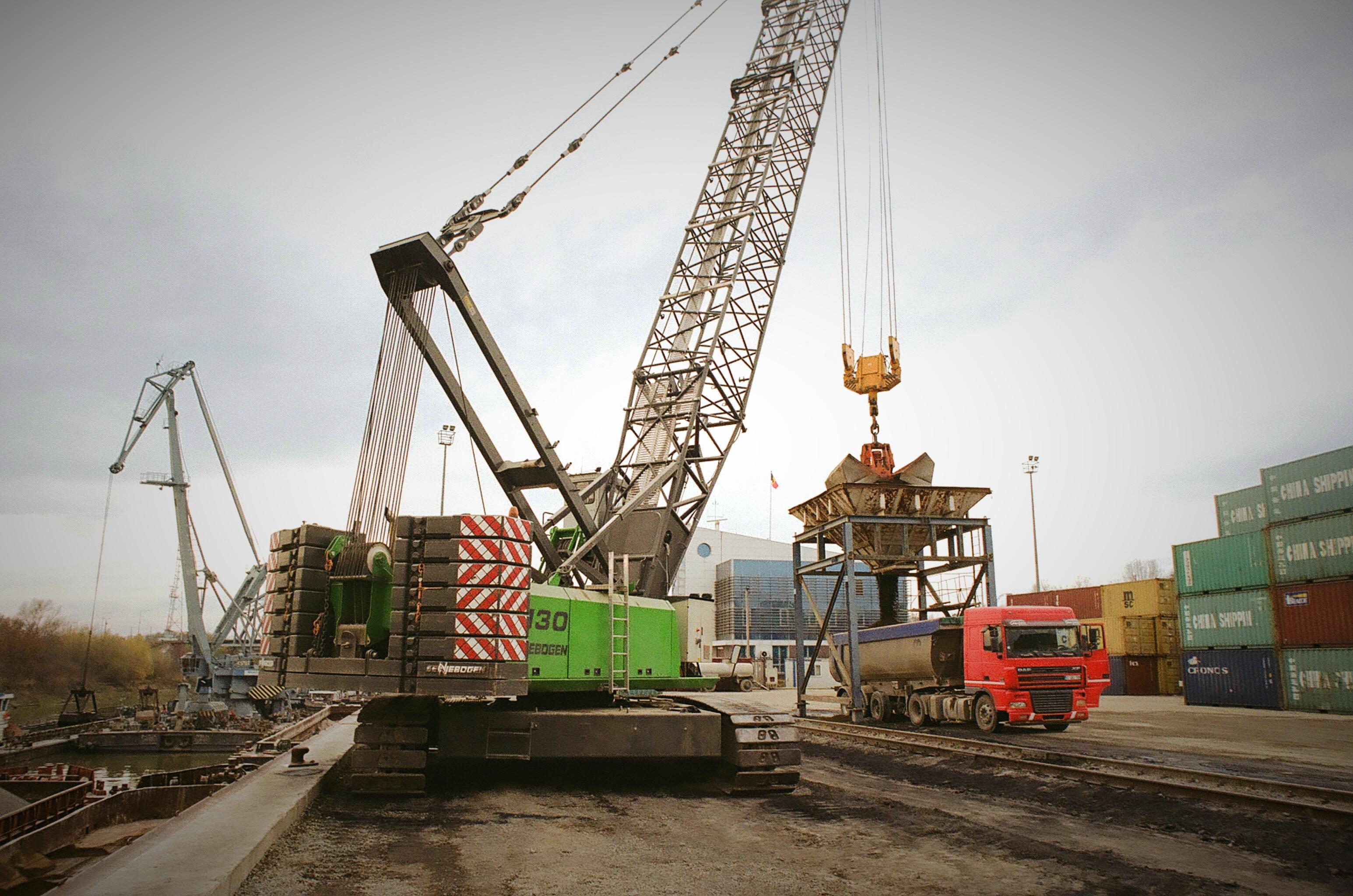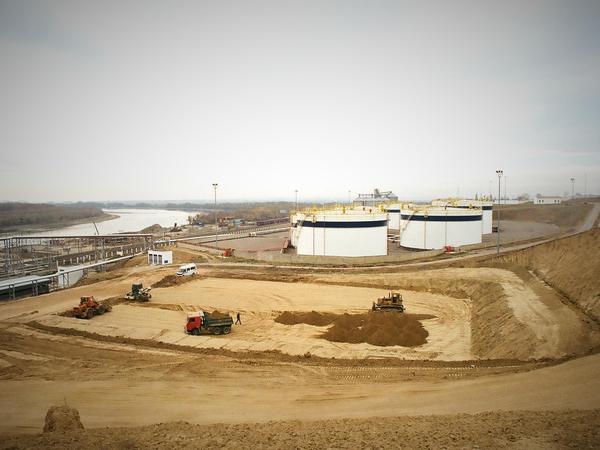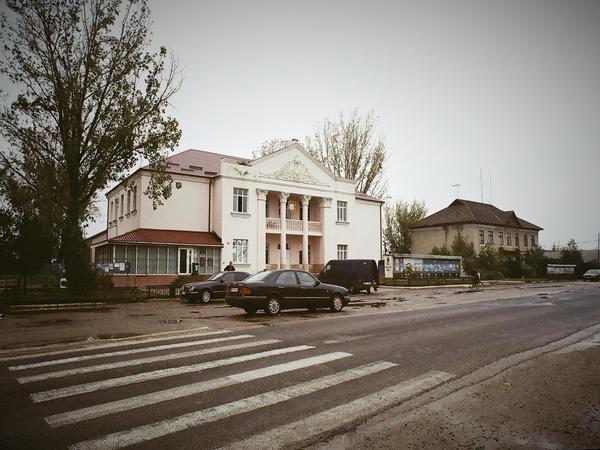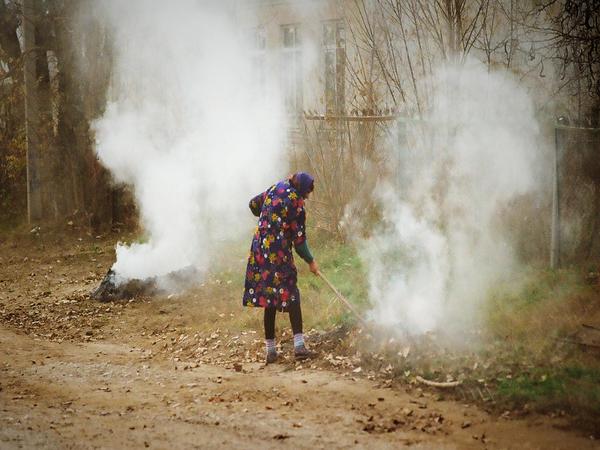
Il porto di Giurgiulești - foto Francesco Brusa
The port of Giurgiuleşti, via a system of canals, represents Moldavia's only access to the sea. All around it, though, is void
The extreme southern boundary of Moldavia is a strip of about 500 metres of land which separates Romanian and Ukrainian territories. On one side some houses being built, and the abandoned open land where there used to be a stadium, indicate the beginning of the village of Giurgiuleşti. On the other side a fence delimits the “Free Economic Zone” of the international port. We are at the point where the waters of the river Prut join those of the Danube and, a little further on, flow into the Black Sea. Acquired in a territorial treaty with Ukraine, it is the state of Moldavia's only access to the sea and is where the Giurgiuleşti International Free Port (GIFP) is situated.
In operation since October 2007, the port was built with the assistance of the European Bank for Reconstruction and Development. Considering the Russian restrictions imposed on Moldavia, in recent years it has become a nerve centre for the Moldovan economy, with an investment of 63 million dollars. From here, in fact, international trade in agricultural and petrochemical products radiates in increasing quantities. The volume of trade in the first half of 2015 was valued at 138 million euro, 130 ships docking at the port. It also provides a good number of jobs and the 417 employees receive wages above the national average.
The advantages
Although small, not permitting all sizes of ship to enter, the port holds a strategic position at the crossing point of many East-West routes, thus carrying on trade with approximately 50 countries. Then a rail network with both European and Russian size rails facilitates connections which other ports don't have. But it is above all the low operating costs, and Moldovan fiscal and legislative regulations, that attract potential partners.
“The legislation regulating the port activities was adopted without previous experience in that field. So there has to be a constant dialogue with the institutions in order to regulate each question as it arises”, explains Irina Burunsus who is in charge of marketing and public relations at Danube Logistics, the principal firm and investor at the port.
The fact that Moldavia had no direct access to the sea before the agreement with the Ukraine was stipulated, results in the supervision of various maritime activities (transport, ship registration, inspections of the technical conditions of the ships) being assigned to different bodies. In the past this has created some diplomatic scandals, like the concession (subsequently withdrawn) of the Moldovan flag to 12 Iranian freighters in 2012 during a European Union embargo on importing crude from that Middle Eastern country. Hence one of the most urgent needs, also expressed by the public offices now administering the port, is the creation of a central authority able to deal with any problem related to maritime operations rapidly.
The lack of infrastructures
Perhaps the biggest handicap to development of the area is, however, the lack of suitable infrastructure.
The road leading to the port is a long, partially asphalted avenue going through the small village of Giurgiuleşti (3,000 inhabitants in the district of Cahul) and practically the only way through.
The contrast is clear: from the dense “jungle” of modern containers and pipes, within a few metres you come to a line of old houses mainly surrounded by farmland. “Most people live by cultivation or rearing livestock”, the Mayor, Tatiana Gălăţeanu, tells us. “However it's true that many residents have been taken on at the port, which has led to the return of some who had left the village to look for work in the capital, inverting the depopulation tendency”.
The small council office is a well cared for building, employing 5 workers. Together with a recently renovated school, a church with a collapsed bell tower awaiting repair and a museum of local culture they make up the core of the village, with its passing traffic of gaunt pedestrians, the odd private car, but mostly great lorries, on their way to the port. “The fact that all the traffic follows the one road through the village is a problem for us, and we point it out continually to the central government”, continues the Mayor. “The houses were built in the 50s and 60s and are subjected to strong vibrations every time a lorry passes. It's a national road and so not under our direct control. There is a plan for building a bypass to the port which should start next year and would benefit everyone: less traffic in the residential part and better commercial connections”.
Goods yes, tourism no
The port area therefore opens up new opportunities for Giurgiuleşti, but these opportunities seem some way from being realised. In general the village's development is hindered by the Moldovan system of strongly centralized administration, which, for the rural areas, means a shortage of resources and little political influence. If in fact the port is attracting increasing investment, it is also true that this is conditioned by the characteristics of its surrounding region.
The general lack of infrastructure and the small supply of a potential workforce in southern Moldavia result in investments remaining limited, the opposite of what happens in the more industrialized parts of the capital or Bălţi, where, for example, the large German producer of automobile components, Dräxlmaier, has relocated.
At present accommodation is practically non-existent for anyone coming to Giurgiuleşti, and the few commercial structures, which consist of a few grocers' shops, just meet the needs of the village residents - another reason why the attempt to open up to tourism lasted only two years. In 2009 in fact the Moldovan government decided to start cruises to Istanbul, but not enough passengers enrolled to make it function.
On the contrary, visitors on business or for the institutions are increasing – there is even a landing place for private helicopters – and connections with the port area have reached as far as China: for example the economic project to reactivate the old Silk Road as the New Silk Road , with the port of Giurgiuleşti as one of the European stops.
That is how, while on the side of the road that dips towards the sea agreements are made and actions for the future planned at the rhythm of modern machinery carrying 800,000 tons of goods a year, on dry land time passes slowly, symbolic of a Moldavia which sees economic progress in the distance, not yet having the means to reach it.





































 To Top
To Top